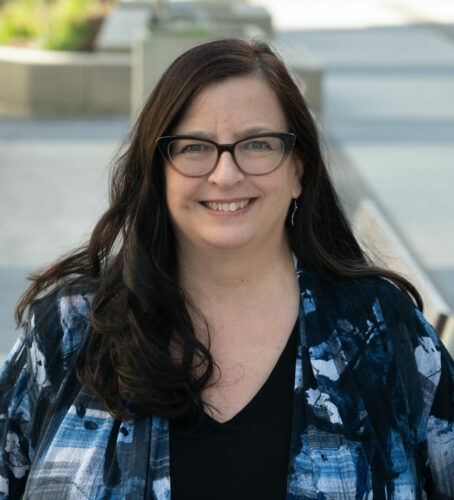The future of our communities relies on the commitments we make today. EPCOR’s annual ESG report shares progress on the North American utility’s sustainability journey, along with stories on innovative projects that are paving the way. This includes the dry ponds built as part of the award- winning Stormwater Integrated Resource Plan – protecting communities from flooding.
Community landscapes have changed over time. Areas that once contained small lakes and sloughs may have been suppressed or diverted decades ago for neighbourhood development.
But that doesn’t change the nature of water.
Whether it comes up out of the ground or falls out of the sky, it will still want to go where it’s been going for millennia. Which can be a problem when your neighbourhood used to be a lake and you have an old basement. So, what can be done?

Welcome to the dry pond – a key part of EPCOR’s flood mitigation strategy in Edmonton. A dry pond is a depression in the landscape usable for recreation, but when storms and floods occur they act as a catchment and hold excess water until the drainage network can handle it.
The concept is deceptively simple. A hole is dug, weeping tile is put in place, pipes are fed in for overflow control, drainage grates are installed, and the surface is landscaped. The dry pond then functions as a park in a high-flood-risk neighbourhood, so that excess water ends up there instead of your basement.
It’s all part of the Stormwater Integrated Resource Plan (SIRP), EPCOR’s award- winning approach to gauging flood risk.
There are five components to SIRP. SLOW (slowing stormwater entry into the drainage network), MOVE (moving excess water away from high-risk areas), SECURE (making sure properties are protected), PREDICT (using technology to predict stormwater flow and management) and RESPOND (reacting to storm events to protect the community).

Susan Ancel is EPCOR’s director of One Water Planning. “There are multiple form factors for dry ponds, such as a soccer field or a baseball diamond,” says Ancel. “But first you have to make sure it’s where the water wants to go.”
Though she adds that nothing happens until the City and community partners approve a location. Once the location makes sense, then it’s about a deeper conversation with the community. Yes, dry ponds are there for flood mitigation, but they can also serve as sports fields, pathways, green spaces, sledding hills, and natural habitats for flora and fauna. They are integral aspects of a community. It takes genuine communication to make sure everyone from EPCOR engineers to tobogganing children are happy.
Dawn Fenske is an EPCOR senior advisor of stakeholder engagement. Every dry pond might look the same, she says, “but how our team engages with residents changes based on location, what exactly we’re doing there, and the priorities of the community.”
Fenske and the EPCOR consultation team use a “stakeholder matrix” with roughly a dozen criteria for each project. “It’s a high level of engagement and consultation,” she says. “Data and experience help guide our communication and identify unique sensitivities.”
EPCOR uses a common methodology for such projects, but project and community feedback allows them to adapt and customize plans. There are many engagement opportunities, including surveys, open houses, online information sessions, chances for individual feedback, and ways for schools, school boards and community leagues to participate.

Relationships are critical. Kent McMullin was president of the Ermineskin Community League when EPCOR developed dry ponds in Ermineskin and the adjacent Steinhauer neighbourhood. “EPCOR managed expectations in a professional manner,” says McMullin. “We all understood the need as soon EPCOR showed us the map of basements that flooded with storms in years past. EPCOR explained the concept and what they were going to do.”
Even still, the community did express concern that the plan called for the removal of a popular toboggan hill. So EPCOR adapted its plan, salvaged the treasured hill and even added a smaller new hill.
“Instead of a plain flat field,” says McMullin, “now we have a contoured bowl, landscaping and multiple toboggan spots. The younger kids slide down into the dry pond and the older kids go to the hill by the southeast corner of the school. It happened through communication.”
“SIRP is a changing of the conversation,” says Susan Ancel. “It used to be about green versus grey infrastructure, with people thinking green, like a dry pond, was not as reliable as the grey, such as pipes. With SIRP, we made green our SLOW strategy and gray the MOVE strategy, and connected them to SECURE, PREDICT and RESPOND. It’s a unique strategy and it’s here in Edmonton.”
Dry ponds are proving to be cost-efficient, low-impact, community-oriented and future-forward. “I’m really proud of the work we do on dry ponds,” says Dawn Fenske. “I feel like we’ve made a difference.”
For more information on EPCOR’s sustainability journey, please visit EPCOR.com/esg.









